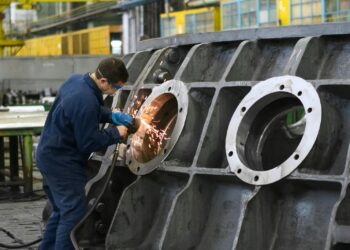Eco-business is at the forefront of global transformation, driven by sustainability needs amid climate change and biodiversity concerns. This report highlights key trends shaping businesses across transportation, fashion, energy, and technology, reflecting a collective effort to reduce environmental impact.
Transportation and Mobility
The transportation sector is seeing a surge in eco-friendly innovations, such as electric vehicles (EVs) and e-bikes, with companies like Tarform introducing elegant electric motorcycles and Invige launching smart e-bike models. Foldable urban commuter bikes, like Decathlon’s B’TWIN E-Bike, cater to city dwellers, while high-performance electric scooters, such as Segway’s ‘ZT3 Pro’, meet demand for powerful, eco-friendly options. These trends suggest a shift towards sustainable urban mobility, reducing carbon emissions and promoting greener commuting.
Fashion and Textile Innovations
Sustainable fashion is gaining traction, focusing on circular economy models and new materials. Brands like Patagonia and Dr. Martens are advancing resale, repair, and refurbishment to address overproduction and textile waste. Innovations include bio-based fibers from Infinited Fiber and Ambercycle, and recycled synthetics from Carbios and Reju, transforming materials like cotton and polyester. However, there’s growing criticism of fast fashion giants like Shein, with calls for transparency and production limits, highlighting industry challenges.
Energy and Infrastructure
Renewable energy is a key focus, with the International Energy Agency (IEA) projecting over 5,500 GW of new capacity by 2030 (Renewables 2024). Trends include street lamp charging stations like ‘EVIE’ for EVs and solar panel-paired rooftop tents from Jackery, integrating renewables into daily life. Circular solutions, such as Neste’s partnership with Borealis and Covestro to recycle tires into automotive plastics, exemplify efforts to close the loop on waste, suggesting a move towards sustainable infrastructure.
Business and Technology
Businesses are embedding sustainability into strategies, with trends like scaling innovation and mandatory transition plans under CSRD and IFRS S1, S2 standards. Technology, such as generative AI valued at $60 billion, boosts productivity in sectors like healthcare and advertising, while 5G enhances data collection for AI and IoT, with a market projected at $797.8 billion by 2030 (5G Technology Market). Consumer demand for sustainable products is strong, with 50% of US consumers willing to pay more, driving ESG practices and immersive technologies like AR/VR, projected to reach $252 billion by 2028.
Comprehensive Note: Detailed Analysis of Current Eco-Business Trends
This note provides an in-depth analysis of current eco-business trends, integrating insights from TrendHunter, IMD, ExplodingTopics, Neste, and Trellis. It aims to offer a professional, detailed overview for stakeholders seeking to navigate the sustainability landscape, with a focus on transportation, fashion, energy, business, technology, policy, and social dynamics.
Methodology and Sources
The analysis draws from a range of authoritative sources, each offering unique perspectives on eco-trends. TrendHunter’s list of 100 eco trends provides product-specific innovations, while IMD’s 16 sustainability trends focus on business strategies. ExplodingTopics highlights 8 business trends, Neste identifies 5 sustainability trends, and Trellis outlines 10 sustainable fashion trends.
Detailed Trend Analysis
Transportation and Mobility
The transportation sector is witnessing a significant shift towards electrification and sustainable mobility. TrendHunter’s list includes:
- Elegant Accessible Electric Motorcycles: Tarform’s Vera model exemplifies stylish, eco-friendly options.
- Smart E-Bike Models: Invige’s Elixe Ebike integrates smart features for enhanced user experience.
- Foldable Urban Commuter Bikes: Decathlon’s B’TWIN E-Bike caters to urban commuters with compact designs.
- High-Performance Electric Scooters: Segway’s ‘ZT3 Pro’ with a 650W motor meets demand for powerful, eco-friendly scooters.
These trends align with ExplodingTopics’ focus on innovation in last-mile delivery, with drone delivery markets projected to reach $5.56 billion by 2030, driven by AI solutions like LogiNext supporting 500M orders. The evidence suggests a move towards reducing carbon emissions in urban mobility, with consumer demand for fast, sustainable options growing.
Fashion and Textile Innovations
Sustainable fashion is a critical area, with Trellis highlighting 10 trends:
- Holistic Decarbonization Strategies: Tapestry (Coach parent) integrates environmentally preferred materials and renewable energy across value chains.
- Criticism of Fast Fashion Giants: Growing controversy over Shein and Temu’s overproduction, with calls for production limits and transparency, reflecting consumer and advocacy pressure.
- Circular Models Integration: Patagonia and Dr. Martens advance resale, repair, and refurbishment, addressing legislative risks and promoting durable apparel.
- New Material Innovations: Bio-based fibers from Infinited Fiber and Ambercycle, and recycled synthetics from Carbios and Reju, are transforming cotton, polyester, and leather supply chains (Next-Gen Materials, Carbios Recycling).
TrendHunter complements this with trends like Recycling Plant Fashion Shoots (Stella McCartney’s Spring) and Ethical Hemp-Derived Backpacks (Ecofrico’s sustainable line), suggesting a focus on reducing textile waste and promoting eco-conscious fashion. The evidence leans toward challenges in consumer behavior, with McKinsey noting Gen Z’s price sensitivity, but opportunities in policy advocacy for circular textiles.
Energy and Infrastructure Developments
Neste’s sustainability trends include:
- The Renewables Challenge: IEA projects >5,500 GW of new renewable energy capacity by 2030, with COP29 agreeing to triple financing for developing nations to $300 billion annually by 2035 (Renewables 2024, COP29 Finance). EU targets 42.5% renewable energy by 2030, up from 24.1% in 2023 (EEA Share).
- The Rise of Circular Solutions: Neste’s partnership with Borealis and Covestro recycles tires into plastics for automotive use (Neste Partnership), reflecting a shift towards closed-loop systems.
TrendHunter adds trends like Street Lamp Charging Stations (‘EVIE’ for EVs) and Solar Panel-Paired Rooftop Tents (Jackery’s CES innovation), suggesting integration of renewables into infrastructure. The evidence leans toward a slowing pace in dethroning fossil fuels, but progress is evident, with China accounting for 60% of global renewable capacity installation by 2030.
Business and Financial Strategies
IMD’s 16 trends provide a business lens:
- Course-correcting sustainability strategies: Firms like Schneider Electric and Nestlé leverage sustainability for product performance, with examples in affordability and innovation.
- Scaling sustainable innovation: Siemens and Decathlon lead in circular models, with McKinsey research highlighting strategic embedding (IMD Scaling).
- Transition plans: CSRD and IFRS S1, S2 mandate science-based plans over 20+ years for 1.5°C, raising questions on Scope 1-3 emissions and decarbonization.
ExplodingTopics adds Companies Focus on Sustainability, with 50% of US consumers willing to pay more for sustainable products, driving ESG adoption and circular economy models like Teemill’s. The evidence suggests challenges in green talent, with Europe’s demand up 5% annually and a projected 18.7% supply gap by 2030, but opportunities in impact investments, growing 85% year-over-year.
Technology and Consumer Trends
Technology is a key driver, with ExplodingTopics noting:
- Generative AI Boosts Business Productivity: Valued at $60 billion, AI impacts 40% of working hours, with applications in healthcare (Syntegra) and advertising (Google, Meta) (BCG AI).
- 5G Vastly Improves Data Collection: Enhances AI and IoT, with a $797.8 billion market by 2030, supporting applications in healthcare (T-Mobile hospital) and agriculture (5G Networking).
Neste’s AI Applied to Sustainability Accounting highlights tools like Gravity and Muir AI for carbon management, while TrendHunter’s AI-Powered Recipe Tools (Hellmann’s Meal Reveal) fights food waste. The evidence leans toward consumer demand for immersive technologies, with AR/VR markets projected at $252 billion by 2028, and social commerce reaching $1.2 trillion by the next year.
Policy and Regulation Impacts
Neste and Trellis emphasize regulatory trends:
- Regulation Keeps Greenwashing in Check: EU’s Green Claims Directive (2028) and CSRD (2024) make sustainability legal, reducing misleading claims (EU Green Claims, CSRD).
- New Regulations: Trellis notes California’s Responsible Textile Recovery Act (2026) and New York’s PFAS ban (Jan. 1), shaping fashion and textiles, with potential tariffs impacting sourcing.
IMD’s Transition Plans and Political Dimension of Social Entrepreneurship (e.g., Too Good To Go’s policy advocacy) suggest a regulatory push for accountability, with COP30 in Brazil focusing on biodiversity (CBD Framework).
Social and Cultural Shifts
Social trends include:
- Nature Positivity and Biodiversity: Biodiversity loss is a top 5 global threat, with SBTN providing guidance for nature-positive targets (WEF Risks, SBTN Action).
- Green Talent Demand: Europe’s 5% annual growth, with UK (13%), Ireland (12.4%), and Norway (11.6%) leading, faces a projected 18.7% gap by 2030, needing doubling by 2050 (LinkedIn Green Skills).
- Collaborations: Partnerships like SAP’s combine corporate scale and social entrepreneur agility, fostering community-driven solutions.
TrendHunter’s Educational Climate Change Toys (‘Habitat’ brick sets) and Model-Backed Carrying Capsules (Catriona Gray’s sustainable bags) reflect cultural shifts towards education and consumer engagement in sustainability.
Tables for Clarity
Below is a table summarizing key trends from each source, highlighting overlap and focus areas:
| Source | Number of Trends | Focus Areas | Key Example |
|---|---|---|---|
| TrendHunter | 100 | Product innovations (e.g., EVs, fashion, packaging) | Tarform’s electric motorcycles |
| IMD | 16 | Business strategies, talent, policy | Scaling circular models (Siemens, Decathlon) |
| ExplodingTopics | 8 | Technology, e-commerce, sustainability | Generative AI ($60B market) |
| Neste | 5 | Renewables, circularity, regulation | IEA’s 5,500 GW renewable capacity by 2030 |
| Trellis | 10 | Sustainable fashion, policy, materials | Bio-based fibers (Infinited Fiber, Ambercycle) |
Another table for policy and regulation trends:
| Trend | Details | Impact |
|---|---|---|
| EU Green Claims Directive | Reduces greenwashing, effective by 2028 | Increased transparency in claims |
| CSRD | Mandates science-based transition plans for listed companies >500 employees | Enhanced corporate reporting |
| California Responsible Textile Recovery Act | Addresses textile waste, effective 2026 | Promotes circular textiles |
| New York PFAS Ban | Bans PFAS in textiles, effective Jan. 1 | Reduces chemical pollution |
Conclusion
This analysis underscores the complexity and dynamism of current eco-business trends, with research suggesting a focus on sustainability innovations, consumer demand, and regulatory drivers. Challenges like green talent shortages and fast fashion criticism are evident, but opportunities in scalable solutions, partnerships, and technology integration offer pathways forward. Stakeholders must navigate this landscape with a commitment to collaboration and innovation, ensuring a sustainable future.
Key Citations
- Top Eco Trends TrendHunter
- Sustainability Trends IMD
- Top Business Trends ExplodingTopics
- Sustainability Trends Neste
- Sustainable Fashion Trends Trellis
- Renewables IEA Report
- COP UN Climate Conference
- EEA Renewables Share
- Neste Partnership
- EU Green Claims Directive
- CSRD Reporting
- Next-Gen Materials Trellis
- Carbios Recycling Trellis
- BCG AI Insights
- 5G Networking NTT
- WEF Global Risks
- CBD Framework
- SBTN Action
- LinkedIn Green Skills
- 5G Technology Market



















